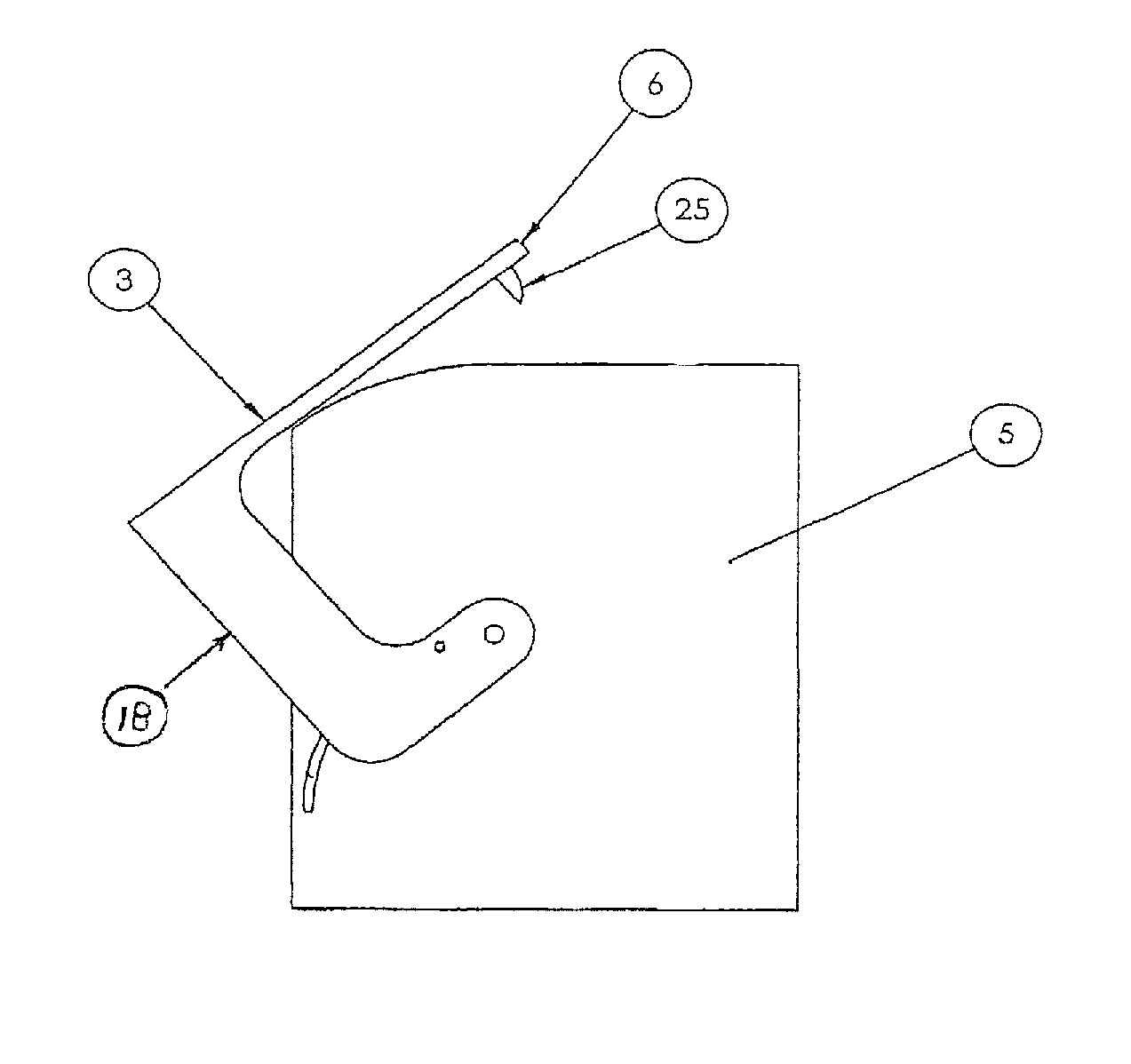Electrical box, integrated flange and cover mechanisms
a technology of electrical outlets and mechanisms, applied in the direction of coupling device connections, transportation and packaging, packaging, etc., can solve the problems of current designs that cannot penetrate the commercial market, little of the patented derivatives finding any level of commercial appeal, and obtrusive aesthetic design, etc., and achieve the effect of saving energy
- Summary
- Abstract
- Description
- Claims
- Application Information
AI Technical Summary
Benefits of technology
Problems solved by technology
Method used
Image
Examples
embodiment 1
[0064
[0065]FIGS. 1 and 2 show the fully assembled unit, front and side view, installed with cover closed. The flange 1 surrounds and integrates the unit into the surrounding drywall 2. Cover 3 is closed with only the outline 4 of the intersection of the flange and cover being visible. The electrical box 5 shown in FIG. 2, which is an integral component of the present invention, is obscured in FIG. 1 and the electrical outlet is obscured in FIGS. 1 and 2.
[0066]FIG. 3 shows the electrical box 5 having a height of 4.25″. The single cover is retracted into the open box and only the leading edge 6 of the cover is exposed.
[0067]Top mounting plates 7 and 9 and bottom mounting plates 8 and 10 include electric outlet stabilizing tabs 11. On standard electrical boxes, the stabilizing tabs of the outlet rest on the outside edge of the box and extend beyond the top and bottom of the box.
[0068]According to one example of this embodiment, top mounting plate 7 and bottom mounting plate 8 may be fo...
embodiment 2
[0080
[0081]FIG. 11 shows an electrical box according to a second embodiment of the present invention. The electrical box 5 in Embodiment 2 is substantially similar to the electrical box in Embodiment 1; however, the closure mechanism differs. The closure mechanism in Embodiment 2 is formed as dual tracks 27 and 28 built into the electrical box, in which a sectional door, attached to a roller, shall be inserted, much like a vertically operated garage door and track. This door (or cover) retracts into the electrical box, which is designed to accept the door due to the box width, internal hinge tracks, and interior box wall (not shown) that prevents interference from electrical wires inside the box, each more fully described under FIGS. 4. When combined with the cover configuration shown in FIG. 13, the electrical outlet is obscured when not in use. Tracks 29 and 30 would support a horizontal (close across) closure utilizing the closures shown in FIG. 15 or FIG. 16. Screw holes 31 and ...
embodiment 3
[0093
[0094]FIG. 19 shows Embodiment 3 of the closure mechanism incorporated into the electrical box 5. The electrical box 5 in Embodiment 3 is substantially similar to the electrical box in Embodiments 1 and 2; however, the closure mechanism differs. The top mounted hinge tracks 39 and bottom mounted hinge tracks 40 are built into the electrical box 5, can receive cover hinges shown in FIGS. 20 and 21, and are formed on only one side of the electrical box 5, rather than three sides in Embodiment 2.
[0095]Tracks 41 / 42, when combined with 39 / 40, can receive split side-by-side covers. Tracks 43 / 44 provide a single vertical (close down) cover configuration and when utilized with tracks 45 / 46 and a split vertical cover, a single outlet may be obscured while other outlet is in use.
[0096]The invented electrical box could accommodate all or any one of the above configurations.
[0097]FIGS. 20 and 21 show that Embodiment 3 is configured to integrate solid (non-sectional) covers attaching only a...
PUM
 Login to View More
Login to View More Abstract
Description
Claims
Application Information
 Login to View More
Login to View More - R&D
- Intellectual Property
- Life Sciences
- Materials
- Tech Scout
- Unparalleled Data Quality
- Higher Quality Content
- 60% Fewer Hallucinations
Browse by: Latest US Patents, China's latest patents, Technical Efficacy Thesaurus, Application Domain, Technology Topic, Popular Technical Reports.
© 2025 PatSnap. All rights reserved.Legal|Privacy policy|Modern Slavery Act Transparency Statement|Sitemap|About US| Contact US: help@patsnap.com



